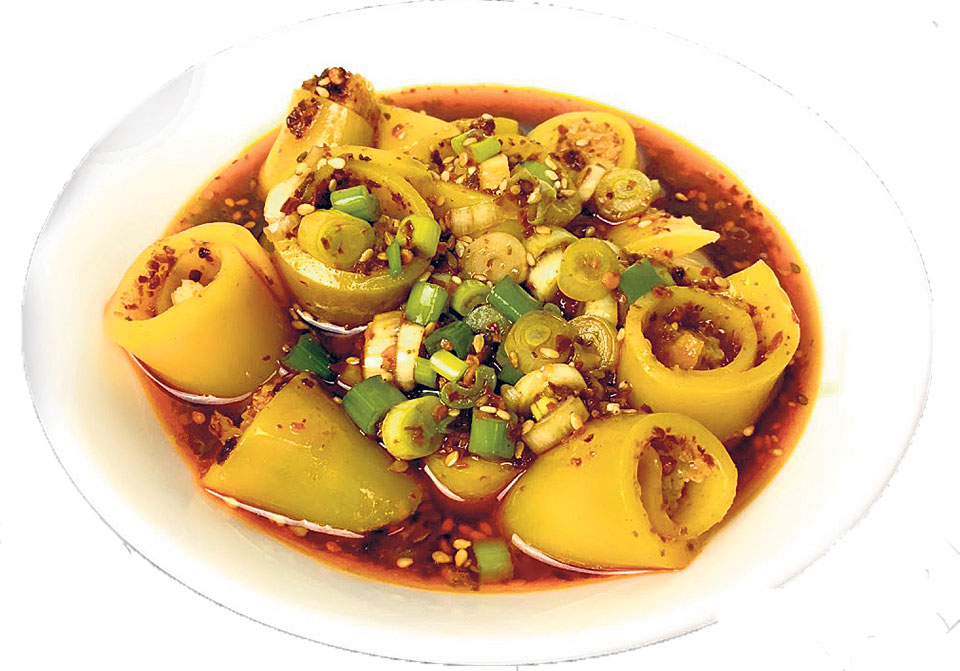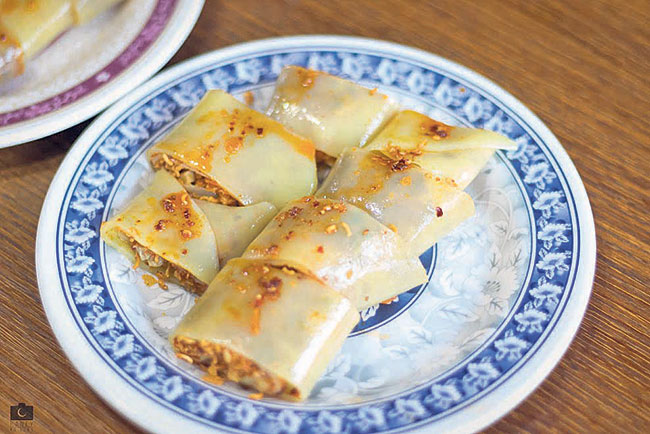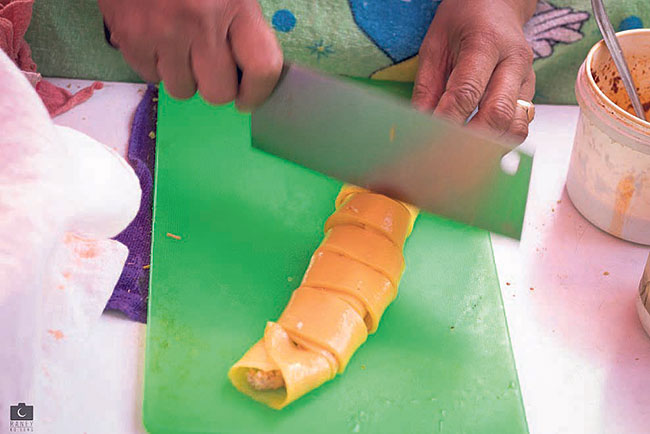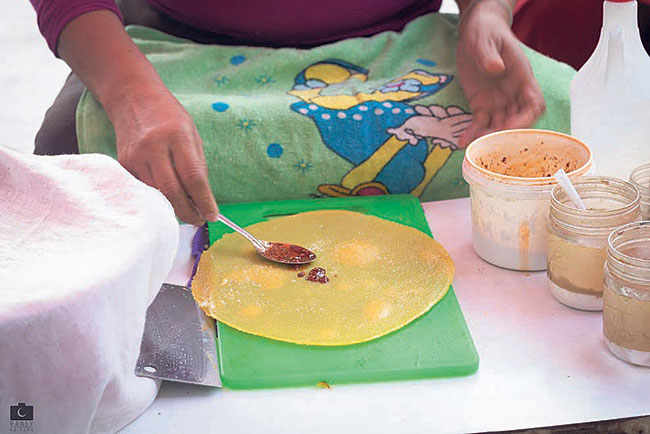'Chakka Panja' team and Paul Shah announce financial aid for daily wage film technicians
4 years ago
keyran8lama@gmail.com

KATHMANDU, Oct 31: It is said “We are what we eat”, may be that is why we Nepalis prefer hot and spicy food. Kathmandu is a melting pot of different cultures and traditions that bring along various cuisines from each corner of the country and abroad. With Newar population in majority, spicy choila and sour aalu tama are some relished snacks here.
 But with people from all corners of the country migrating to Kathmandu in search of better opportunities, the city has also adapted well with all kinds of cuisines like paanipuri and chatpate being the most common street foods and momo the most preferred snack.
But with people from all corners of the country migrating to Kathmandu in search of better opportunities, the city has also adapted well with all kinds of cuisines like paanipuri and chatpate being the most common street foods and momo the most preferred snack.
All kinds of new foods have their own lifetime, some live forever for their taste while others phase out due to fewer enthusiasts. In the recent years, a Tibetan cuisine called Laphing has carved itself a place in Kathmanduites’ hearts.
 There are plenty of eateries around the hidden alleys and streets of Boudha that serve Laphing. Laphing is available at a reasonable cost and is mostly preferred as a light but spicy snack by the youngsters. The food is especially made in Boudhha, Shyambhu and Tibetan Camp, Ekantakuna.
There are plenty of eateries around the hidden alleys and streets of Boudha that serve Laphing. Laphing is available at a reasonable cost and is mostly preferred as a light but spicy snack by the youngsters. The food is especially made in Boudhha, Shyambhu and Tibetan Camp, Ekantakuna.
There are two varieties of Laphing available in the market -- plain Laphing and soup Laphing.
Originally called ‘Liangfen’ which literally translates to cold noodle, Laphing was introduced in Nepal after the Tibetans migrated to the country, especially Boudha, from the north, said Tamdi Tshering, owner of Cool Brother Laphing, Ekantakuna. He said Laphing rapidly became a trending fast food in Kathmandu only about four years ago.
Tamdi’s Laphing is mostly famous among college-goers and office workers. He prepares a flour base for Laphing with some soya sauce and black pepper, and adds some salt as well as mixture of ginger and garlic. Then, he also adds homemade pickles with some secrets indigents along with chips and noodles. Then he rolls the dough and cuts it in circles. The hearty bowl of Laphing is then served to the customers. “Usually, people prefer eating chips and noodles Laphing than the soup one,” he said.
Two teenage girls -- Yashaswi Shakya and Ushnisha Shakya, who were at Cool Brother Laphing, said, “We first ate Laphing out of curiosity and we loved it. So it became a regular snack for us. We like the chips and noodles Laphing than the soup Laphing.”
“Food is like science to me, so I experiment with Laphing. I have innovated new varieties of Laphing called Buff Kima and Chicken Kima with the flavors of both Laphing and momo,” said Suraj Shrestha, owner of Sophia Laphing Café, Ekantakuna. “Every piece of Buff Kima Laphing tastes like momo and Laphing combined.”
Suraj said he opened the Laphing café keeping in mind the increasing demand for the Tibetan cuisine. Before opening the café, he did a rigorous research on the trend of Laphing in Kathmandu. He believes that the spices in Laphing wash away people’s boredom and that is why the dish is best liked by youngsters.
 Suraj also plans to make fruit Laphing and vegetable Laphing in the coming days.
Suraj also plans to make fruit Laphing and vegetable Laphing in the coming days.
Tshering Dolma, a Laphing vendor in Sighal Square, Naghal, said she had been selling Laphing for three years now and most of her customers were students. “I love hot and spicy food so I used to eat panipuri and chatpate a lot. But, now I prefer Laphing instead of other spicy street snacks,” said Pratikshya Lama, a customer at Tshering’s stall.
Laphing is not only delicious but it could also be beneficial for health because research have shown that hot chilies are good for health and can reduce the risk of cardiovascular diseases. It also helps to prevent diabetes and boost metabolism. Likewise, spicy food has the capability to prevent cancer. Moreover, spicy food like Laphing will raise your body temperature during chilly winter days.
All in all, this cold dish takes one’s taste buds by storm, and is a rare culinary experience. Couple that with the rich history and culture behind the food, and it makes a mandatory Kathmandu experience.
Leave A Comment